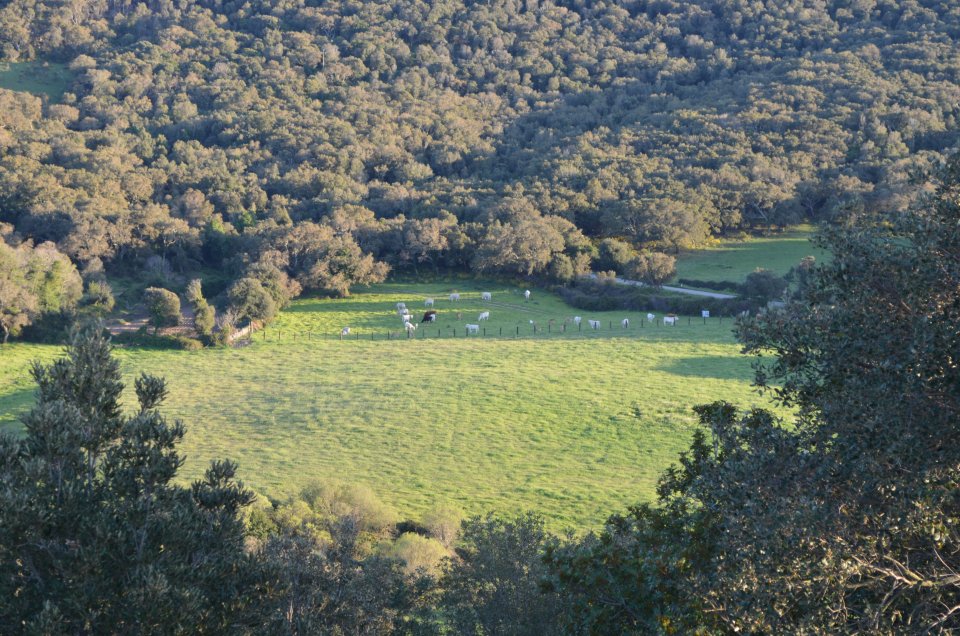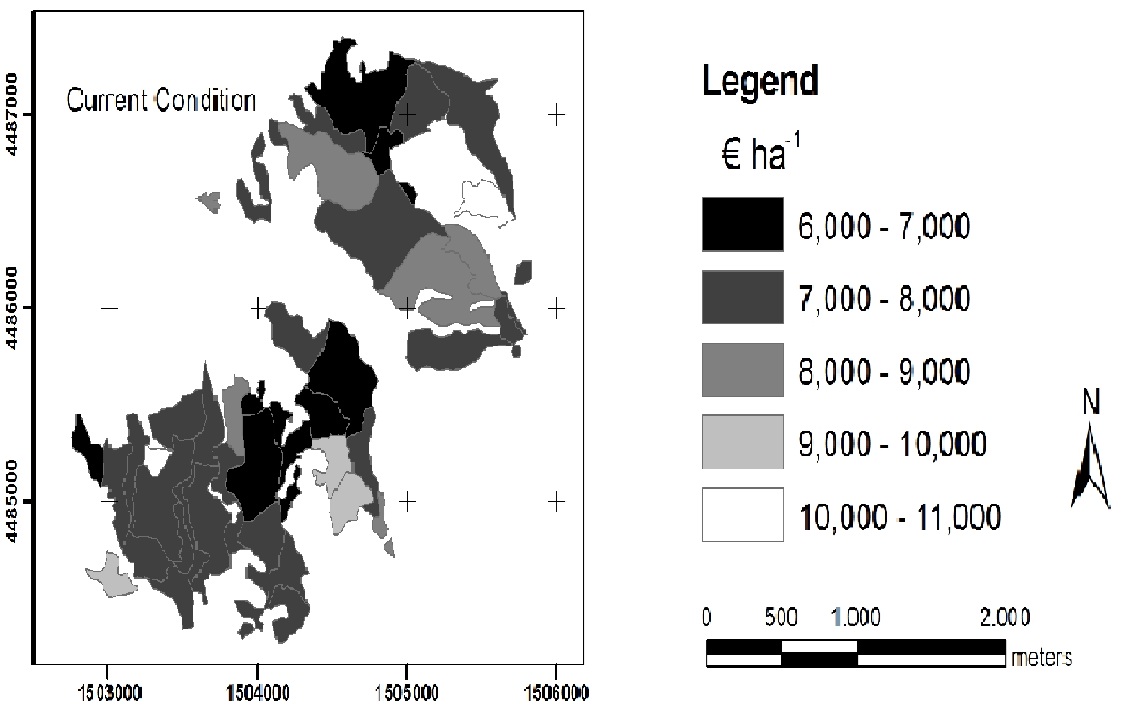
The study aimed at assessing the value and trade-offs of a number of ecosystem services associated to cork oak woodland management under different sylvicultural options in state-owned forests in Sardinia.
Forests deliver a range of goods and services that are important for human well-being and environmental health: understanding the interactions with respect to their provision, trade-offs and synergies, as well as the drivers influencing their interactions, represents a challenge for forest resources management. Under this context, a tool for economic valuation of ecosystem production from cork oak forests is provided, with distinctive respect to the assessment of the effects of alternative silvicultural options on cork and fodder production, carbon sequestration, and water yield.
Pure cork oak forest stands in Sardinia are characterized, on average, by annual economic production of 93 euro/ha as concerns cork, 37 euro/ha as concerns fodder (for grazing), 37 euro/ha as concerns carbon sequestration and 261 euro/ha as concerns water yield. The value of cork production on an 11-year cycle equals 1023 euro/ha, on average. The total economic values of ecosystem production among the tested silvicultural alternatives (from 350 up to 800 cork trees per hectare) have proven to be characterized by relatively small differences, due to the trade-offs among the considered goods and services.
The proposed spatial visualization of the economic values of production of goods and services is a useful support for forest management planning, e.g., to project selected productions by cork oak stands in the future in order to improve the effectiveness of management strategies toward their preservation and enhancement and/or identify priority areas that would maximize ecosystem production for local communities. Since the total economic production values among the tested silvicultural alternatives are characterized by relatively small differences, under conditions similar to those here surveyed managers may safely rely on different stand density options, without any relevant detrimental effect on total economic value of the considered goods and services.
Besides being a useful support for forest management planning, the data and tools provided may be effective toward the establishment of local schemes of payments for ecosystem services. Dealing with a relatively still not explored field, many of the assumptions and simplifications adopted here were uncertain. On the other hand, major advancements are provided by this study. From a methodological point of view, the proposed standscale valuation approach does not refer to the age of the forest stands, a parameter most often considered for ecosystem production modeling but rather meaningless for cork stands in Sardinia usually characterized by composite structures with multi-aged trees.
Further work is required in order to consider other services provided by cork oak stand management, such as soil conservation, landscape quality and recreation related to tourism, sports and health and well-being, which have not been evaluated in the present study but that, from the socio-economical point of view, may be very meaningful in many Mediterranean contexts.
Piermaria Corona piermaria.corona@crea.gov.it, https://www.crea.gov.it/en/web/foreste-e-legno
Nicola Puletti nicola.puletti@crea.gov.it, https://www.crea.gov.it/en/web/foreste-e-legno
Sandro Dettori sdettori@uniss.it, https://agrariaweb.uniss.it/it
Further information
Corona P, Quatrini V, Schirru M, Dettori S, Puletti N (2018). Towards the economic valuation of ecosystem production from cork oak forests in Sardinia (Italy). iForest 11: 660-667. - doi: 10.3832/ifor2558-011
D. Murru

Example of map of the economic values of total annual production of selected goods and services in selected pure cork oak forest management units in Sardinia . D Murru
